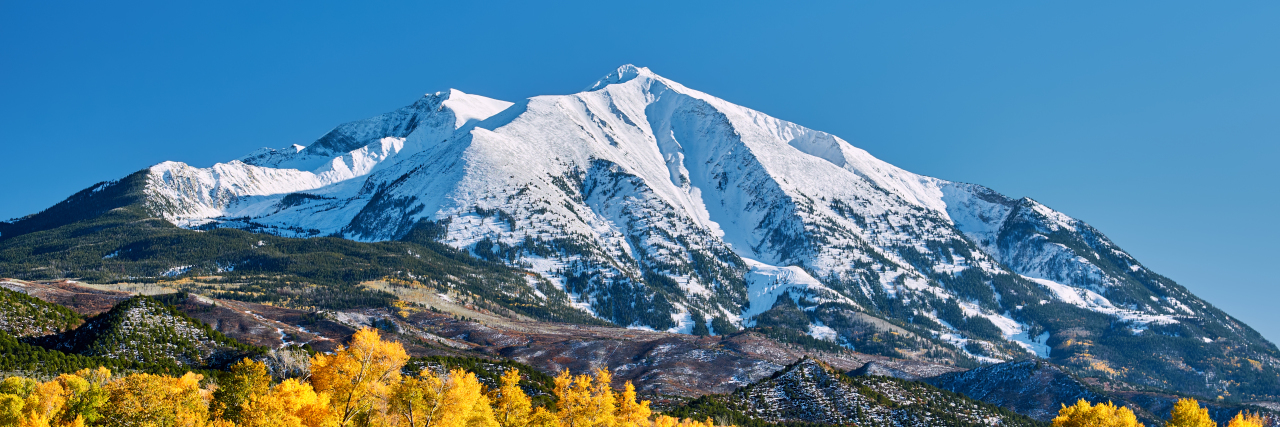I’ve been thinking a lot lately about mountains. Where I grew up, and live still, there are mountains all around me. Some are small, some are large, some are “typical,” and others are world-renowned. However you look at it, they’re beautiful.
The thing about mountains is that they do not like to move. They’re pretty stationary unless there’s a catastrophic event like an earthquake or a volcanic eruption. Within our lifetimes, we rarely see any changes to a mountain. We like it that way; they’re predictable in that regard.
While the climb, the hike, the dip in the glacial lake can all be risky, the one thing we can generally count on is that those mountains will go nowhere. But in the world of chronic illness, our metaphorical mountains can become insurmountable and overwhelming.
When a person is suddenly struck by a chronic, debilitating and even life-threatening illness, those mountains before us no longer represent a fun challenge. They instead represent an obstacle keeping us from diagnosis, treatment and quality of life.
When I was young, I hiked and backpacked for fun. I spent two weeks on an expedition course with National Outdoor Leadership School (NOLS) with only the things we could carry on our backs, and a one-time re-ration stop about halfway through. We had to read a topographical map and follow a compass to figure out where we were going. We had to keep track of landmarks, water sources, open clearings and more! I was cool, calm and confident about my skills, and I stood out as a leader among my group.
I also spent time backpacking and canoeing with my dad. We explored the Canyonlands of Utah and the Rocky Mountains, spent lazy days floating rivers and cool nights counting stars. The mountains around us were inviting and freeing.
The mountains I began to face throughout the next decade, however, became so much more. They were not beautiful or enticing. They were cold, calculating and tried to kill me. In fact, if I hadn’t clung to my love of a challenge, they may have killed me. Doctors didn’t know what was wrong, and even as they started to inch toward a diagnosis, they brushed things off as “too rare” or said I didn’t fit the textbook examples. There was no way that could be the diagnosis, and the mountains still wouldn’t move.
It wasn’t until I began to educate myself in rare diseases, adrenal insufficiency and Addison’s disease specifically, that I saw those mountains begin to shift. The more knowledge I gained, the smaller the mountains became. They grew again as each doctor continued to dismiss my concerns, but as lab tests became irrefutable, those mountains again became moveable.
I have learned over the past several years that new mountains will pop up in front of me, and the best thing I can do is keep climbing.
Some days, getting out of bed is a mountain that needs to be moved.
Some days, staying awake to get anything done is a mountain that stays solidly planted before me.
Some days, the mountain of laundry is my biggest victory!
Some days, not screaming at the doctors who continue to claim that I can’t possibly have anything else wrong, or that I spend too much time researching my illnesses is a mountain I barely scrape by. It’s devastating when the mountain grows before you in the form of a Ph.D. who has never known true chronic illness in any way other than a textbook patient. I am in no way a textbook patient. That’s going to be my permanent mountain, but as I learn more, experiment more, read more, advocate more, I find this mountain is not immovable either, but will need to be chipped away at slowly with every appointment, every test, every follow-up.
But for today, I’ll settle for the mountain of laundry, the victory of having taken my dog to the vet and cleaned the living room.
As for tomorrow?
I’ll move another mountain.
Getty image by HaveSeen.

